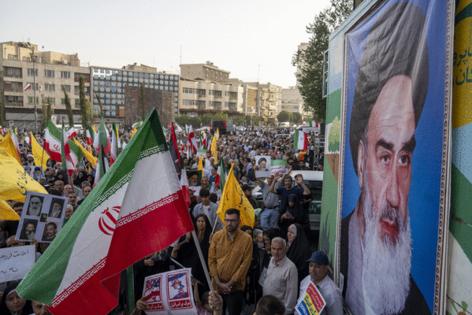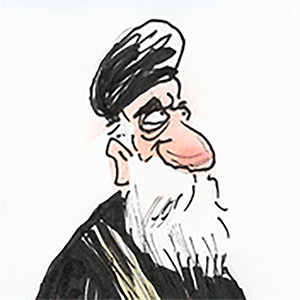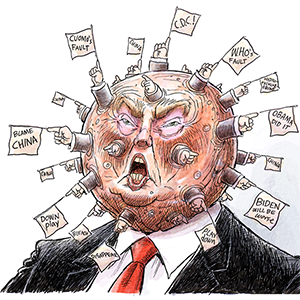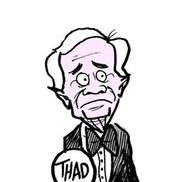Martin Schram: Peace through power – It's electric!
Published in Op Eds
For several hold-your-breath weeks, as spring sizzled into summer, the nuclear dealmakers of President Donald Trump’s USA and the Supreme Leader Ayatollah Ali Khamenei’s Iran seemed astonishingly close to a deal.
So close that it seemed they’d soon reach out and seize the deal. But no one was willing to reach out.
First, on May 13, Iran’s chief proposer, Foreign Minister Abbas Araghchi, proposed solving our nuclear bomb fears by creating something few of us had considered: a regional nuclear power consortium to produce only low-grade enriched uranium to supply electricity for its Persian Gulf members – namely: Iran and its present adversaries, Saudi Arabia and United Arab Emirates. The consortium’s efforts would be internationally monitored by the United Nations’ International Atomic Energy Agency (IAEA). Perhaps also the United States?
Two weeks later, during talks in Oman, Trump’s chief proposer, envoy-of-all-things Steve Witkoff, proposed just a slight variation on Iran’s regional nuclear consortium. Team Trump even named the same countries and added one more: Oman. Of course he included roles for the U.S. and the permanent presence of the IAEA, to finally guarantee transparency.
There was one key difference – but it too should be solvable. Iran has said it will never surrender its right to enrich uranium for civilian energy uses. That means no nuclear weapons. Low-enriched uranium for providing electricity is only enriched at levels just above 3%. But Iran had just enriched a lot of uranium at 60% – that’s just one step below the 90% level that can be used to build a nuclear weapon.
Question: Why did everyone suddenly start proposing this stuff about a regional nuclear consortium?
Answer: Just a few hours before Trump’s envoy unveiled his plan, the IAEA suddenly announced troubling news. In the first months of 2025, Iran secretly doubled the amount of its uranium that is enriched all the way to 60%. That’s just one quick step below the nuclear weapons level of 90%.
Trump hoped you’ll forget that when he scrapped former President Barack Obama’s Iran nuclear deal in 2018, experts warned him that Iran would kick out the IAEA inspectors and cameras and secretly expand its enrichment in its pursuit of a nuclear bomb.
The idea of a Persian Gulf nuclear power consortium has been studied and written about for years. In a June 2 article in The Bulletin of Atomic Scientists, experts from Princeton University’s Program on Science and Global Security, envisioned a consortium that is strikingly similar what Iran’s and America’s negotiators proposed. Princeton’s Frank von Hippel, Alexander Glaser, Zia Mian and Seyed Hossein Mousavian described how such a consortium could work and the role each country might perform that would be acceptable to all regional adversaries.
Here's how their article – “A nuclear consortium in the Persian Gulf as a basis for a new nuclear deal between the U.S. and Iran” – divides the responsibilities:
Iran: Performs all facets of development, production and operation of the centrifuges that are key to the uranium enrichment. (But, apparently to appease Trump, Iran would perform no actual enrichment on its own soil.)
Oman: Site of the facility where all low enrichment of uranium would occur. It would be staffed by Iranian experts and monitored by the IAEA.
Saudi Arabia: All mining of uranium, conversion to uranium hexafluoride and storage of enriched uranium would occur there.
United Arab Emirates: The consortium’s management headquarters would be based in the UAE., plus offices of other participating nations – perhaps including Egypt and Turkey.
Since that article was published, Trump officials eased their demand that Iran cannot enrich any uranium. Iran enriching uranium to the lowest 3% levels for electrical power production may be acceptable – when it is monitored and all is transparent.
One of Princeton’s experts came to this project with a bigtime head start. In 2005, Seyed Hossein Mousavian was a top advisor to Iran’s future president, Hassan Rouhani, who was then secretary of Iran’s supreme national security council. Back then, Mousavian recalled, moderate and hardline Iranian presidents urged all future consortium partners to agree to end their country’s individual enrichment efforts. They should only use the consortium’s enriched uranium – to assure no one was secretly enriching.
As an advisor to Iran’s former leaders, Mousavian considered consortium plans since 2013. He saw and understood concerns long ago that we and our leaders need to quickly learn today. As Princeton’s experts wrote a month ago:
“A regional consortium has been proposed by both Iran and the United States as a way to bridge the gap between U.S. demands that Iran have no enrichment and Iran’s insistence that it will not give up its rights and achievements regarding enrichment.”
It’s time, once again, for all of us to lead our leaders. We can’t always trust. We must always verify.
_____
_____
©2025 Tribune Content Agency, LLC.

























































Comments